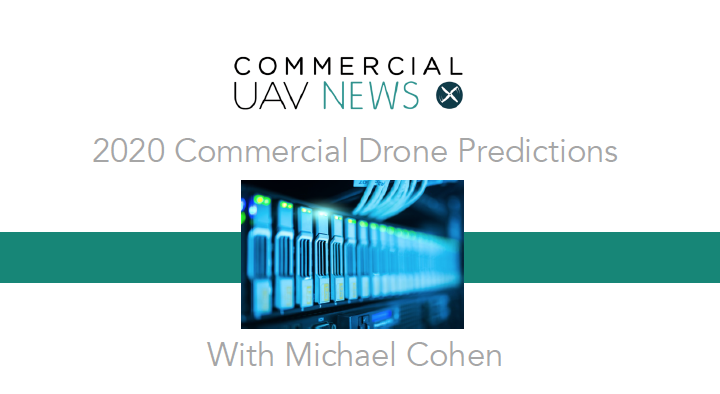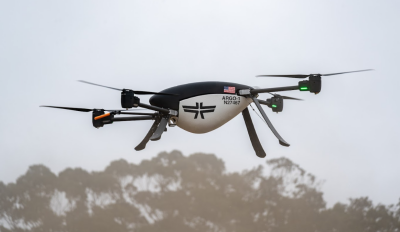Artificial intelligence (AI) and machine learning has been seen as the ultimate data management solution in the industry. Big data is a big problem for inspection companies looking to gain meaningful insights from millions, if not billions, of images gathered by drone operations. This has slowed adoption and prevented some companies from scaling their operations. But when and how this technology will fully enter the space is still a work in progress.
Companies like Industrial SkyWorks Inc. are already starting to leverage the abilities of backend and onboard AI to deliver inspection data solutions for their clients through their Virtual Inspection software and are fully versed in AI’s current strengths and weaknesses in the UAV inspection space. We spoke with Michael Cohen, CEO at Industrial SkyWorks Inc., to get his predictions on what to expect in 2020 with AI and what the challenges will be, how to ensure data security while facilitating collaboration across teams, and much more.
Danielle Gagne: What is the current status on the use of AI in drone inspections, and what do you predict will happen in the future for AI in drone inspections?
 Michael Cohen: The story here is split, there is a lot of misplaced hype in some cases and in others there are some very good early solutions. In the current market, we think of AI in terms of domain presence, for instance, are we thinking about on-board, back-end or front-end AI? For 2020, we’re very bullish for on-board and back-end AI and quite bearish for front-end AI.
Michael Cohen: The story here is split, there is a lot of misplaced hype in some cases and in others there are some very good early solutions. In the current market, we think of AI in terms of domain presence, for instance, are we thinking about on-board, back-end or front-end AI? For 2020, we’re very bullish for on-board and back-end AI and quite bearish for front-end AI.
We’re seeing terrific applications with onboard autonomy. This will be an interesting area to watch for 2020 as more companies emerge with new autonomous solutions. Back-end AI will also continue to commercialize in 2020, particularly with data processing and data optimization platforms integrating AI. For instance, using AI to optimize imagery. Although these technologies are not customer facing, the latest data output is much better than it was in previous years and will continue to improve.
In 2020, we’re less optimistic about full-blown, front-end AI for domains like object recognition, for example, say concrete issues. There continues to be a large focus in this domain, but, while the science of recognition is there, the data needed to build real, commercially viable detection systems is still in its early days. Realistically, companies should look to build an AI roadmap with an eye toward 2025, and all business models or integration strategies should ask ‘where is the data coming from, who is classifying the data, and at what frequency?’ There’s a big bridge to efficacy here.
What are the challenges in AI implementation and adoptions in the drone inspection market for 2020?
We think it’s both good and bad news for 2020. The use of AI in the inspection market will be slow, but we think this will be a year of new, long-term contracts for the drone service provider market. We expect wider adoption of drone inspections across markets, which will require a focus on data integration with legacy management systems, e.g., how we get your data into a house that was built years, if not, decades ago. This is a front door challenge that will backseat AI for 2020. Simple data integration and management, for inspection programs at scale, will be enough of a challenge, even a threat, to adoption, and will occupy focus. We think buyers will be kept busy implementing long-term inspection relationships that will enable longer run benefits for these technologies, and this is all a good thing!
What are some of the biggest security risks for drone inspections in 2020? What are some things the industry is doing to protect data?
Since management for drone operations is maturing, a big theme for 2020 will focus on data management specifically looking at data redundancy, data security, and data accessibility, particularly how to securely move data through Teams. Many inspection buyers expect drone inspection companies to add value across Teams by providing multiple access points to various end users. However, this value-add increases risk. For instance, data moves from the inspection teams to the engineering teams, which then gets passed on to procurement. With each transfer of data, the risks are elevated. Being able to transfer that data securely and efficiently is going to be the big focus for 2020.
What do you think is going to be the future in data processing for drone inspections? Desktop software or cloud computing and why?
Until we get full-blown onboard processing, we call the market by thirds: one-third desktop, one-third cloud, and one-third internal cluster. Depending on the type of data, size, location, and the nature of the mission, all three of these options can be a leading solution, but it is clearly a buyer-led decision. Regulation, geography, and legacy systems will continue to dominate these decisions. Yet, even with similar companies doing similar work, these solutions can look different.
Most are looking for customizable solutions that align with their current data policies. You could have three companies that are very similar, but one is inside a firewall, the other is entirely cloud-based, and the other wants to build a cluster within their house. This means data is going to have to sit on different types of platforms with different security protocols, and there will have to be different distribution and access to that data. They all require customized solutions. This will be an ongoing challenge for our industry because how do you build customization at scale?
















Comments